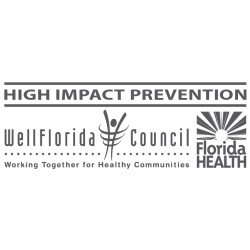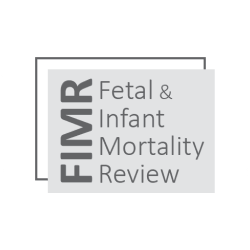SOURCES AND NOTES
FOR NORTH CENTRAL FLORIDA COUNTY HEALTH PROFILES 2025
POPULATION
Total Population
Source:
U.S. Census Bureau, 2019-2023 American Community Survey, Table B01001.
Notes:
These are estimates based on the five-year American Community Survey conducted by the U.S. Census Bureau.
Percent Population 65+ (%)
Source:
U.S. Census Bureau, 2019-2023 American Community Survey, Table B01001.
Notes:
These are estimates based on the five-year American Community Survey conducted by the U.S. Census Bureau.
Black Population (%)
Source:
U.S. Census Bureau, 2019-2023 American Community Survey, Table B01001B.
Notes:
These are estimates based on the five-year American Community Survey conducted by the U.S. Census Bureau.
White Population (%)
Source:
U.S. Census Bureau, 2019-2023 American Community Survey, Table B01001A.
Notes:
These are estimates based on the five-year American Community Survey conducted by the U.S. Census Bureau.
Hispanic Population (%)
Source:
U.S. Census Bureau, 2019-2023 American Community Survey, Table B01001I.
Notes:
These are estimates based on the five-year American Community Survey conducted by the U.S. Census Bureau.
SOCIOECONOMICS
Median Household Income ($)
Source:
U.S. Census Bureau, 2019-2023 American Community Survey, Table S1903.
Notes:
These are estimates based on the 5-year American Community Survey conducted by the U.S. Census Bureau.
Persons Below Poverty (%)
Source:
U.S. Census Bureau, 2019-2023 American Community Survey, Table B17024.
Notes:
These are estimates based on the 5-year American Community Survey conducted by the U.S. Census Bureau.
For more information on federal poverty levels, visit: http://aspe.hhs.gov/poverty/13poverty.cfm
Persons Below Poverty 200% FPL (%)
Source:
U.S. Census Bureau, 2019-2023 American Community Survey, Table B17024.
Notes:
These are estimates based on the 5-year American Community Survey conducted by the U.S. Census Bureau.
For more information on federal poverty levels, visit: http://aspe.hhs.gov/poverty/13poverty.cfm
Percent ALICE Households (2022)
Source:
2024 ALICE Report County Snapshots – Florida.
Notes:
ALICE, (Asset Limited, Income Constrained, Employed) represents the growing number of families who are unable to afford the basics of housing, child care, food, transportation, health care, and technology. ALICE households frequently struggle to make ends meet but are not eligible for public assistance. United Way of Florida is a partner to the national United for ALICE alliance that makes available periodically the national, state, and county ALICE reports.
Persons 25+ with H.S. Diploma or Higher (%)
Source:
U.S. Census Bureau, 2019-2023 American Community Survey, Table B15002.
Notes:
These are estimates based on the 5-year American Community Survey conducted by the U.S. Census Bureau.
LIFESTYLE
Adults with Diagnosed Diabetes (%)
Source:
flhealthcharts.gov, BRFSS Data, 2017-2019
Adults Who Are Current Smokers (%)
Source:
flhealthcharts.gov, BRFSS Data, 2017-2019.
Adults Who Are Overweight or Obese (%)
Source:
flhealthcharts.gov, BRFSS Data, 2017-2019.
ACCESS TO CARE
Non-Elderly Uninsured (%)
Source:
U.S. Census Bureau, Small Area Health Insurance Estimates, 2022.
Medicaid Eligible (%)
Source:
flhealthcharts.gov population estimates for 2024; Special Report from Florida Medicaid Office for Medicaid Eligibles as of December 31, 2024.
Notes:
The total population estimated for 2024 from flhealthcharts.com were used in the calculation. The number of Medicaid eligibles were as of December 31, 2024.
MATERNAL AND INFANT HEALTH
Teen Birth Rate 15-17 Years of Age
Source:
flhealthcharts.gov maternal health query and population estimates for 2021-2023, accessed 3-18-2025.
Notes:
Teen Birth Rates are calculated by dividing the total number of births to moms 15-17 years of age by the total female population of the 15-17 year olds then multiplied by 1000.
Low Birthweight Babies (%)
Source:
flhealthcharts.gov maternal health query and population estimates for 2021-2023, accessed 3-18-2025.
Notes:
This is the percent of live births that were low birthweight babies. Low birthweight babies are born weighing less than 2,500 grams.
Late or No Prenatal Care (%)
Source:
flhealthcharts.gov maternal health query and population estimates for 2021-2023, accessed 3-18-2025.
Notes:
This is the percent of total births that had late or no prenatal care. Late or no prenatal care is defined as the care was started in the third trimester or no prenatal care was listed.
Infant Death Rate
Source:
flhealthcharts.gov maternal health query and population estimates for 2021-2023, accessed 3-18-2025.
Notes:
Number of deaths during the first year of life per 1,000 live births in the same year or other time period.
HEALTH STATUS
Cancer Incidence Rate
Source:
flhealthcharts.gov Cancer Incidence Age Adjusted Rates, pulled 3-12-24
Notes:
Age adjusted rates are per 100,000 population. Cancer is defined as ICD 10 codes c00-c97. Incidence is the number of new cases per population in a given time period.
New HIV Diagnoses Crude Rate
Source:
flhealthcharts.gov HIV Diagnoses Per 100,000 Population (2023).
Notes:
The term HIV Diagnosis is defined as a diagnosis of Human Immunodeficiency Virus (HIV) infection regardless of the stage of disease (stage 0, 1, 2, 3 [AIDS], or unknown) and refers to all persons with a diagnosis of HIV infection. HIV is a condition caused by the human immunodeficiency virus (HIV). The condition gradually destroys the immune system, which makes it harder for the body to fight infections. These data represent new diagnoses of HIV in Florida by year of diagnosis (HIV incidence). Monitoring new diagnoses of HIV can be used to target prevention and educational programs to affected populations.
The county numbers do not include the department of corrections. Florida total does include the department of corrections total.
Preventable Hospitalizations Under Age 65
Source:
flhealthcharts.gov Ambulatory Care Sensitive Conditions Query, assessed 3-18-25.
Notes:
Crude rates are per 100,000 population under 65 years of age. For the complete listing of preventable hospitalization codes see: http://archive.ahrq.gov/data/safetynet/billappb.htm
Dental Emergency Room (ER) Visits Rate
Source:
AHCA Emergency Department Visit Data, 2023; Florida CHARTS. gov population query, 2023.
Notes:
Crude Rates are per 1,000 total population. All Dental ER Visits are based on ICD 10 Codes between K0 and K14. All diagnosis and reason codes were checked.
Mental Health Emergency Room (ER) Visits Rate
Source:
AHCA Emergency Department Visit Data, 2023; flhealthcharts.gov population query, 2023.
Notes:
Crude Rates are per 1,000 total population. All Mental Health ER visits are based on ICD 10 Codes between F0-F69 and F80-F99. All diagnosis and reason codes were checked.
Disparity: Black/White Mortality Rates
Source:
flhealthcharts.gov, Vital Statistics 2021-2023 death data, assessed 3-18-2025.
Notes:
Numbers reflect the percent difference between the Black age-adjusted death rate and the White age-adjusted death rate for all causes of deaths. The percent difference is calculated by subtracting the White rate from the Black rate, dividing the difference by the White rate, then multiplying the result by 100. The White and Black age-adjusted mortality rates were calculated based on all causes of deaths.
Heart Disease Mortality Rate
Source:
flhealthcharts.gov, Vital Statistics 2021-2023 death data, assessed 3-18-2025.
Notes:
Age adjusted death rates are per 100,000 population. Heart Disease includes ICD 10 Codes: I00-I09, I11, I13, I20-I22, I24, I25-I28, I30-I31, I33-I38, I40, I42-I51.
For information on crude vs. age-adjusted mortality rates, see the end of this section.
Cancer Mortality Rate
Source:
flhealthcharts.gov, Vital Statistics 2021-2023 death data, assessed 3-18-2025.
Notes:
Age adjusted death rates are per 100,000 population. Cancer includes ICD 10 Codes: C00-C16, C18-C22, C25, C32-C34, C43, C50, C53-C56, C67, C70-C72, C81-C85, C88, C90-C96.
For information on crude vs. age-adjusted mortality rates, see the end of this section.
Chronic Lower Respiratory Disease (CLRD) Mortality Rate
Source:
flhealthcharts.gov, Vital Statistics 2021-2023 death data, assessed 3-18-2025.
Notes:
Age adjusted death rates are per 100,000 population. Chronic Lower Respiratory Disease includes ICD 10 Codes: J40-J47.
For information on crude vs. age-adjusted mortality rates, see the end of this section.
Unintentional Injury Hospitalization Rate
Source:
flhealthcharts.gov; Non-fatal unintentional injuries hospitalizations per 100,000 population (2023)
Notes:
Crude Rates are per 100,000 total population. ICD-10-CM: Principal Diagnosis with S00-S99, T07-T34, T36-T50 with a 6th character of 1, 2, 3, or 4 (T36.9, T37.9, T39.9, T41.4, T42.7, T43.9, T45.9, T47.9, and T49.9 with a 5th character of 1, 2, 3, or 4), T51-T65, T66-T76, T79, O9A.2-O9A.5, T84.04**, M97**. Initial encounter, active treatment only (seventh character of A or missing). External cause of injury selected from ICD-10-CM External Cause Matrices.
Unintentional Injury Mortality Rate
Source:
flhealthcharts.gov, Vital Statistics 2021-2023 death data, assessed 3-18-2025.
Notes:
Age adjusted death rates are per 100,000 population. Unintentional Injuries includes ICD 10 Codes: V90-V99, W00-W19, W32-W34, W65-W74, X00-X09, X40-X49, Y85.
For information on crude vs. age-adjusted mortality rates, see the end of this section.
Notes on Crude vs. Age-Adjusted Death Rates:
Both the crude and the age-adjusted death rates are displayed in this report. Crude rates are the actual number of deaths for a given cause for a desired population divided by total number in the desired population and then multiplied by 100,000 to get the rate per 100,000 population. Age-adjusted death rates are crude rates adjusted to standardize the population distribution effects on the rate.
Although useful for certain purposes, the crude death rate as a comparative measure has a major shortcoming. It is a function of the age distribution of the population at risk. For example, the population at risk in one county may be primarily elderly persons ages 65 and older while the population at risk in another county may be primarily persons ages 40 to 50. Crude rates are recommended when a summary measure is needed and it is not necessary or desirable to adjust for other factors.
The frequency with which health events occur is almost always related to age. In fact, the relationship of age to risk often dwarfs other important risk factors. For example, acute respiratory infections are more common in children of school age because of their immunologic susceptibility and exposure to other children in school. Chronic conditions, such as arthritis and atherosclerosis, occur more frequently in older adults because of a variety of physiologic consequences of aging. Mortality rates tend to increase after the age of 40.
Because the occurrence of many health conditions is related to age, the most common adjustment for public health data is age adjustment. The age-adjustment process removes differences in the age composition of two or more populations to allow comparisons between these populations independent of their age structure.
The age-adjusted death rate is a summary measure that eliminates the effect of the underlying age distribution of the population. The result is a figure that represents the theoretical risk of mortality for a population if the population had an age distribution identical to that of a standard population. For example, a county’s age-adjusted death rate is the weighted average of the age-specific death rates observed in that county, with the weights derived from the age distribution in an external population standard, such as the U.S. population.
Age-adjustment allows for the comparison of two distinct populations (for example, Columbia County versus Florida) that most likely have differing age distributions. The age effects are in essence removed from the rates and the age-adjusted death rate no longer reflects the actual death rate but is an indicator rate that can be used for relative comparisons.
In the past, the National Center for Health Statistics (NCHS) age-adjusted rates using the U.S. 1940 standard population. Other agencies used the U.S. 1970 Standard. Beginning with 1999 data, federal agencies began age adjusting to the U.S. 2000 Standard Million Population.













